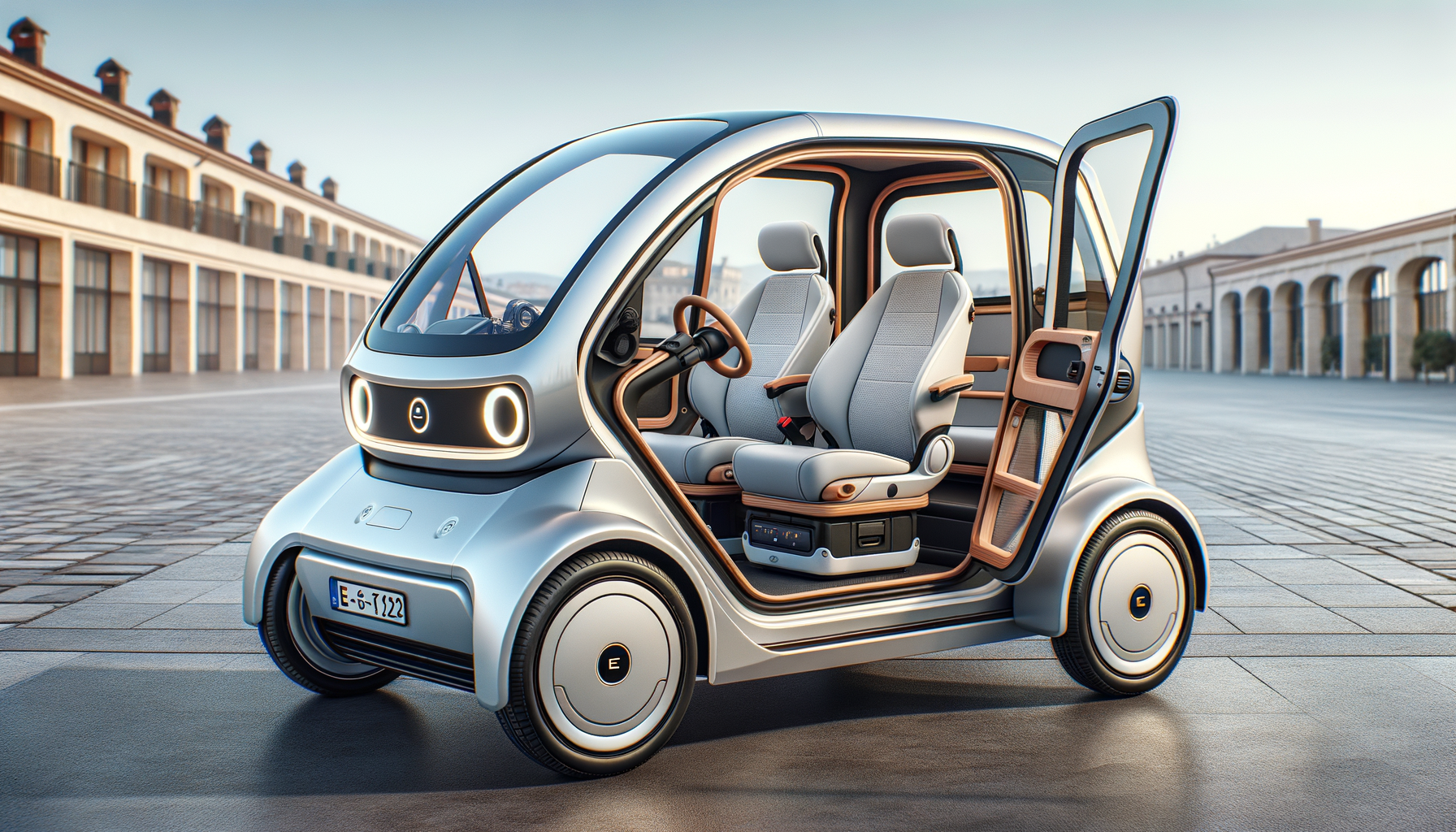Tiny Electric Vehicles: A Revolution in Urban Mobility
In the bustling world of urban transport, tiny electric vehicles have emerged as a game-changer. These compact and efficient vehicles are designed to navigate through crowded city streets with ease, offering a sustainable and practical solution to urban commuting challenges. The rise of tiny electric vehicles is not just a trend; it’s a response to the growing need for eco-friendly transportation options that reduce carbon footprints and alleviate traffic congestion.
One of the key advantages of tiny electric vehicles is their size. These vehicles are small enough to fit into tight parking spaces, making them ideal for city dwellers who often struggle with limited parking availability. Additionally, their compact design allows for better maneuverability in heavy traffic, reducing travel time and enhancing the overall driving experience.
Moreover, tiny electric vehicles are typically more affordable than their larger counterparts, both in terms of purchase price and maintenance costs. They consume less energy, leading to lower electricity bills, and their simpler mechanics mean fewer repairs and replacements. For individuals seeking a cost-effective and environmentally conscious mode of transport, tiny electric vehicles present a compelling option.
Two Seater Electric Car: Perfect for Couples and Small Families
For those who don’t require the space of a traditional family car, two seater electric cars offer a sleek and efficient alternative. These vehicles are perfect for couples, small families, or anyone who values efficiency over excess. With their streamlined design, two seater electric cars provide a smooth and enjoyable driving experience, while also contributing to environmental sustainability.
Two seater electric cars are designed with the modern driver in mind. They come equipped with advanced technology features such as touchscreen displays, GPS navigation, and connectivity options that make driving more convenient and enjoyable. Additionally, their smaller size doesn’t compromise on safety, as these cars are built with robust safety features to protect occupants during their journeys.
From a financial perspective, two seater electric cars are a smart choice. They are generally more affordable than larger vehicles, and their energy-efficient design means lower running costs. With fewer parts and simpler mechanics, maintenance is also less of a hassle, making them an attractive option for those looking to save money without sacrificing quality or performance.
Electric Cars for Seniors: Prioritizing Comfort and Accessibility
As the population ages, the demand for vehicles that cater to the needs of senior drivers is on the rise. Electric cars for seniors are designed with a focus on comfort, convenience, and accessibility, ensuring that older adults can maintain their independence and mobility without compromising on safety or ease of use.
One of the standout features of electric cars for seniors is their emphasis on comfort. These vehicles often come with adjustable seating, easy-to-use controls, and advanced climate control systems to ensure a pleasant driving experience. Additionally, many models offer enhanced visibility through larger windows and rearview cameras, making it easier for seniors to navigate the roads safely.
Accessibility is another critical aspect of electric cars for seniors. Many models are designed with low entry points, wide door openings, and supportive seating to accommodate individuals with mobility challenges. Furthermore, the intuitive design of these cars means that seniors can operate them with minimal effort, thanks to features like automatic transmissions and user-friendly interfaces.
- Adjustable seating for personalized comfort
- Enhanced visibility for safer driving
- User-friendly controls for ease of use
The Environmental Impact of Electric Vehicles
Electric vehicles, including tiny electric vehicles and two seater models, play a significant role in reducing environmental impact. By relying on electricity instead of fossil fuels, these vehicles contribute to lower greenhouse gas emissions, helping to combat climate change and improve air quality in urban areas.
The production and use of electric vehicles are aligned with global efforts to transition towards sustainable energy sources. Many countries are investing in renewable energy infrastructure, making it easier and more efficient to charge electric vehicles with clean energy. This shift not only benefits the environment but also promotes energy independence and security.
Moreover, electric vehicles produce less noise pollution compared to traditional combustion engine vehicles, creating quieter and more peaceful urban environments. This reduction in noise pollution is particularly beneficial in densely populated areas, where constant traffic noise can affect the quality of life for residents.
- Lower greenhouse gas emissions
- Reduced noise pollution
- Support for renewable energy initiatives
Conclusion: Embracing Electric Vehicles for a Sustainable Future
As we look towards the future of transportation, electric vehicles stand out as a pivotal component of sustainable urban mobility. Whether it’s the convenience of tiny electric vehicles, the efficiency of two seater electric cars, or the accessibility features designed for seniors, these vehicles offer a range of benefits that cater to diverse needs and preferences.
Electric vehicles are not just a trend; they represent a shift towards a more sustainable and environmentally conscious way of living. By embracing these innovative automobiles, we can reduce our carbon footprint, improve urban air quality, and create a cleaner, quieter world for future generations.
For seniors, electric cars provide an opportunity to maintain independence and mobility, ensuring that they can continue to enjoy the freedom of the open road. With their emphasis on comfort, convenience, and accessibility, these vehicles are well-suited to meet the needs of older drivers, making them an excellent choice for those seeking a reliable and sustainable mode of transport.




Leave a Reply